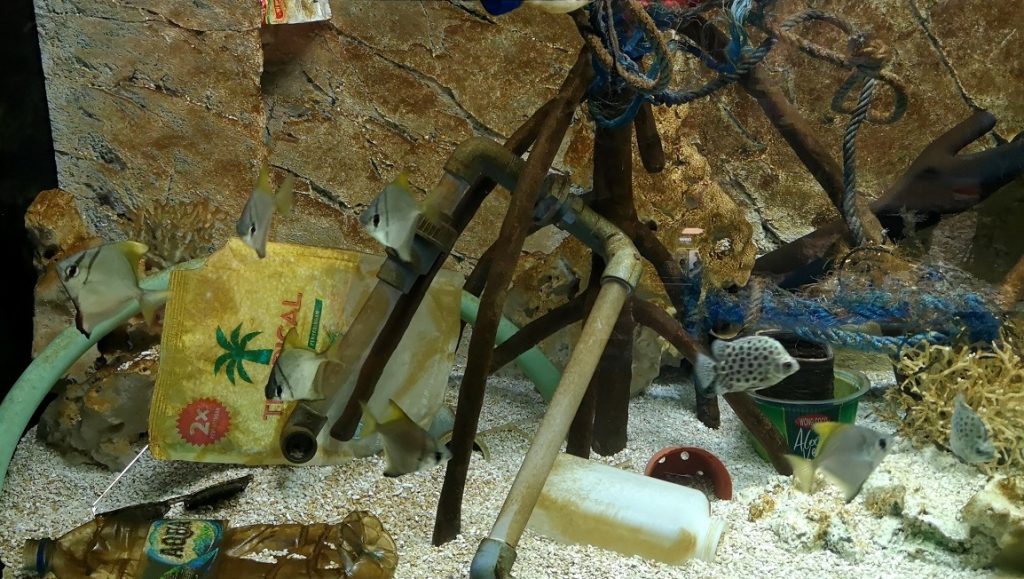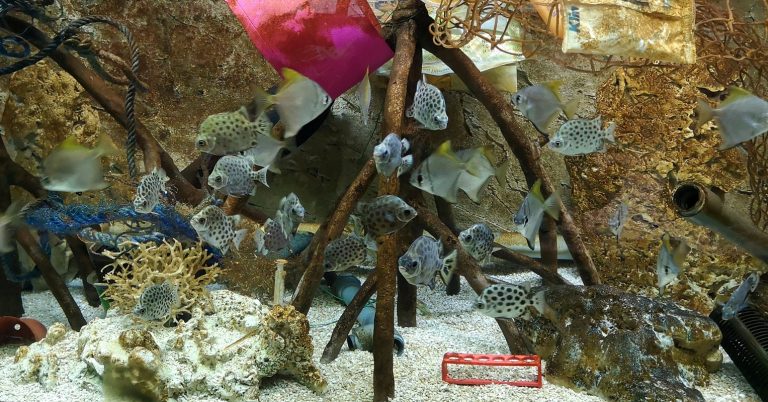The new aquarium at Brno Zoo is full of plastic, allowing visitors to see what ocean pollution really looks like. Aside from the plastic, the aquarium also contains two kinds of fish, whose natural habitat is in Southeast Asia where the ocean is particularly heavily polluted. Photo: Courtesy of Brno Zoo.
Brno, Jun 30 (BD) – Ocean pollution, like all pollution, is a hot topic and the cause of much discussion, with a general consensus that it is a serious problem that we need to tackle urgently. However, while there are plenty of images showcasing the problem, it remains hard for some to truly visualize what ocean pollution looks like. To raise awareness of the problem and bring it closer to the people, Brno Zoo is opening a new aquarium, featuring garbage and plastic waste among the living fish.
“People often talk about water and ocean pollution, but they can’t really imagine it. It is much more illustrative when they can see it directly and in detail. We show what it looks like for animals when garbage floats around them. And, of course, we hope that this will then raise questions that visitors will start thinking about – such as whether the fish will interact with the plastic, whether they will eat it, what that would mean for them and how far the plastic could get from the water,” said aquarium curator Petr Sramek.

Although the garbage-filled aquarium also contains two species of fish – the spotted scat, and the silver moony fish – the zoo has been careful to avoid the traps that would cause harm in the real ocean, such as narrow-entrance nets that fish cannot escape or nylon fishing lines. The zoo has also made sure that the plastics are big enough that there is no danger the fish could eat them. The two species of fish are both from Southeast Asia, which is severely affected by pollution.
“If people think that there is too much plastic in this aquarium, there are places where the animals do not even fit between the garbage. And it is similar on beaches, which may be closer to people. With all this, we want to draw attention to a problem that is relatively new and arose purely from human activity,” added Sramek.






